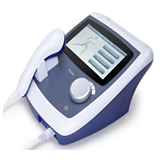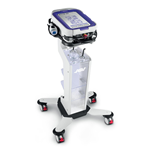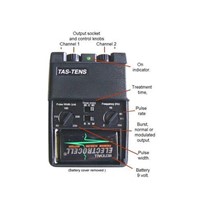According to the Center for Disease Control and Prevention (CDC), arthritis affects 54.4 million U.S. adults—that’s nearly 1 in 4 people. And whether you’ve lived with arthritis for a long time or if you’ve been recently diagnosed, you have undoubtedly talked to your doctor about ways to relieve your pain.
There are many arthritic diseases, which cause non-inflammatory or inflammatory joint pain. Osteoarthritis causes degeneration of one or more joints, while rheumatoid arthritis can be experienced in many regions of the body. Either variety is a common cause of joint and muscular pain, stiffness and limitation of mobility that can interfere with what doctors call the normal basic “activities of daily living.”
While there are medications for pain relief, the alarming increases in the opioid crisis have doctors—and patients—saving these as last resorts as many of these medications can cause dependency and side-effects. There are many drug-free options for you to consider, such as TENS, which stands for Transcutaneous Electrical Nerve Stimulation. TENS therapy is a drug-free alternative to help control arthritis pain without the use of additional drugs as well as reduce the amount of medication and related side-effects. See below for tips on using a TENS device for arthritis pain.
How TENS works
TENS therapy has been used for over 40 years by medical professionals like physical therapists and chiropractors. Easy to use, TENS treats muscle and joint pain on multiple body parts. TENS units work by delivering small electrical impulses through electrodes that have adhesive pads to attach them to a person’s skin. Scientific theory suggests that TENS therapy blocks pain messages to the brain with gentle electrical pulses; stimulates endorphins, your body’s natural painkillers; and increases circulation to targeted areas.
3 Tips for TENS Therapy with Arthritis Pain
- For pain confined to a single region: Place the electrode pads above and below or parallel to the involved joint.
- For arthritic pain is in multiple areas, such as from rheumatoid arthritis: Some doctors recommend you first apply the pads to the most painful region, followed by other areas as needed.
- For chronic arthritic pain at the hip or knee: Because the nerve supply to these joints originates from the lumbar spine, try applying the TENS pads to the lower back to decrease pain.
There are many clinical studies demonstrating the utility of TENS therapy. If you are active and have arthritis in the knee, one study showed improved mobility during and immediately after a TENS therapy session. Furthermore, the nonpharmacologic (drug-free) recommendations from the American College of Rheumatology includes patients instruction in the use of a TENS device.
When seeking a TENS unit, do your research. There are many devices available with different features for you to consider. Explore OMRON Healthcare for more information on TENS devices. As with any treatment or therapy, consult your doctor or other healthcare professional to see if a TENS device might be right for you.



-160x160-state_article-rel-cat.png)
































